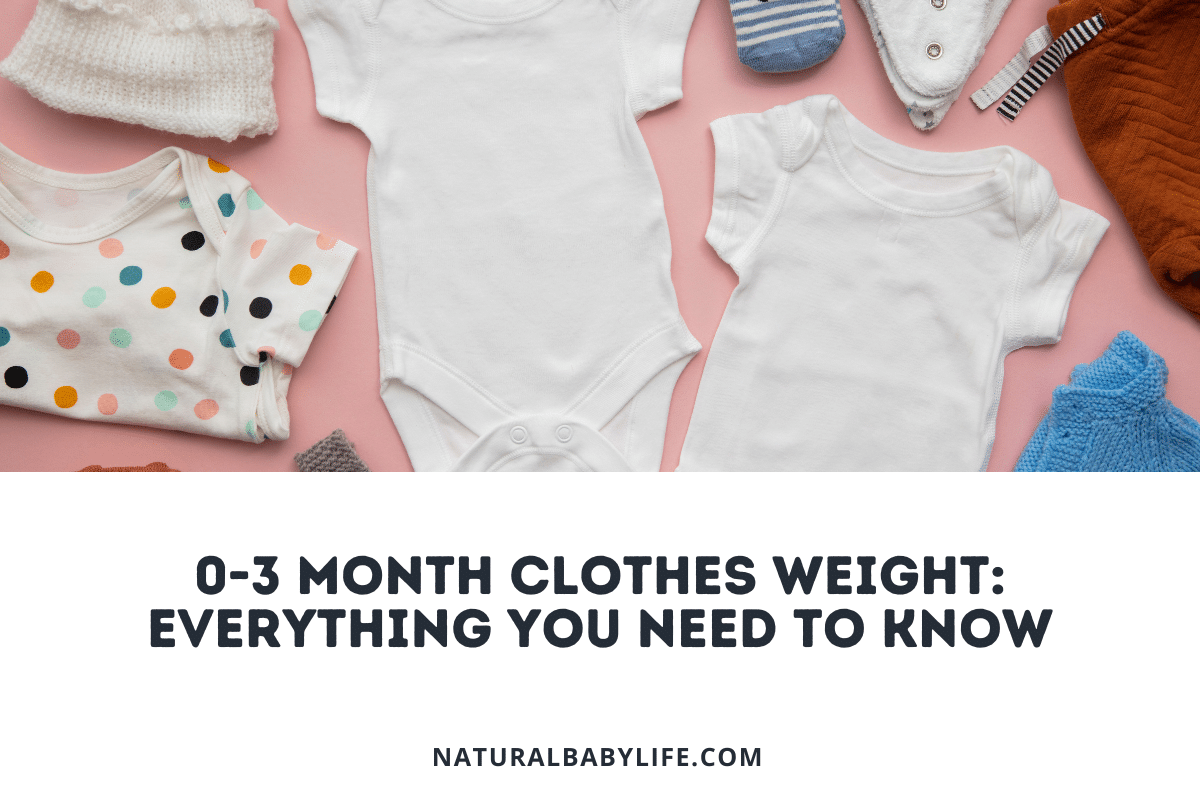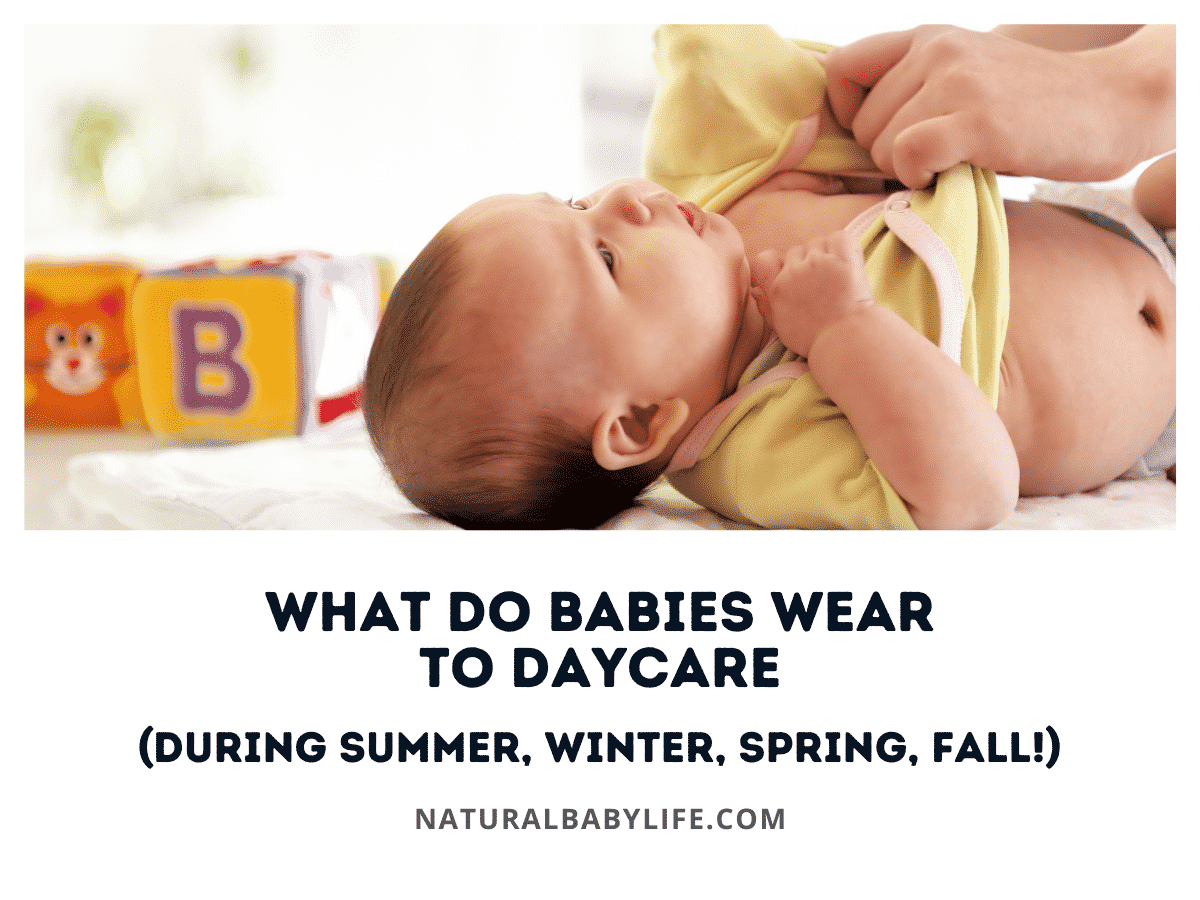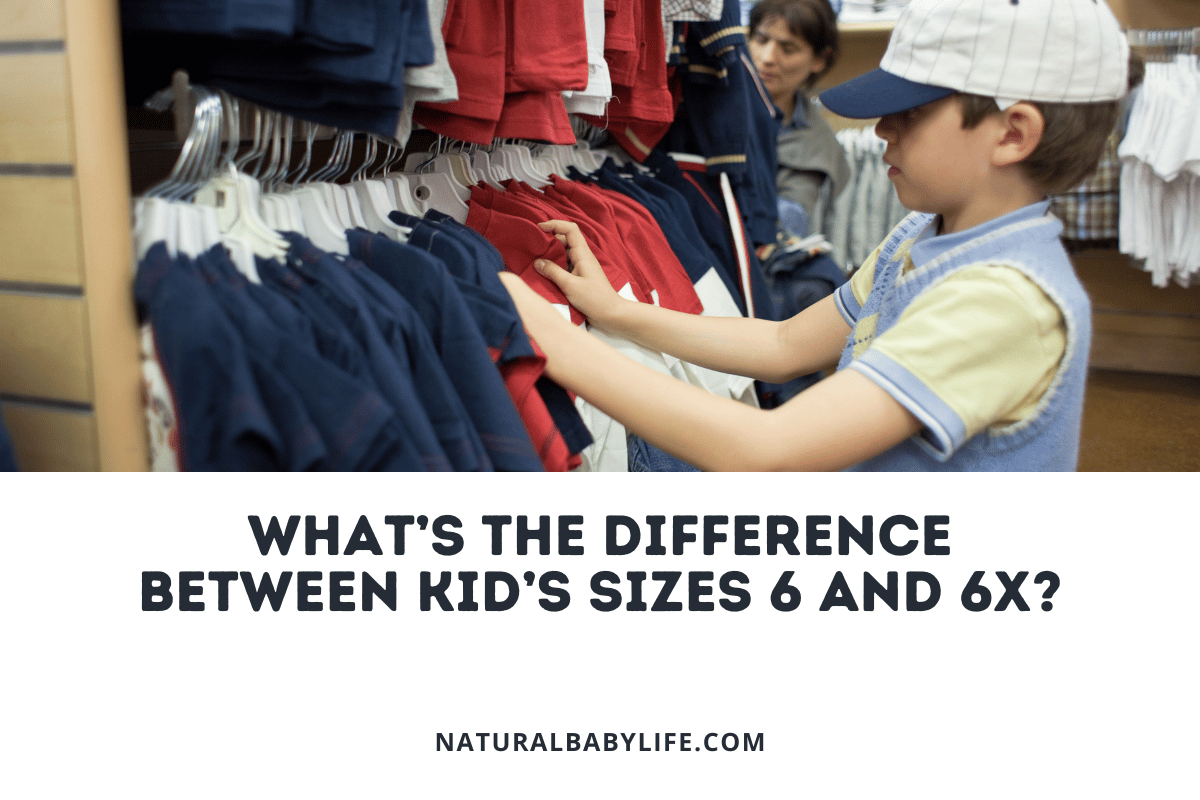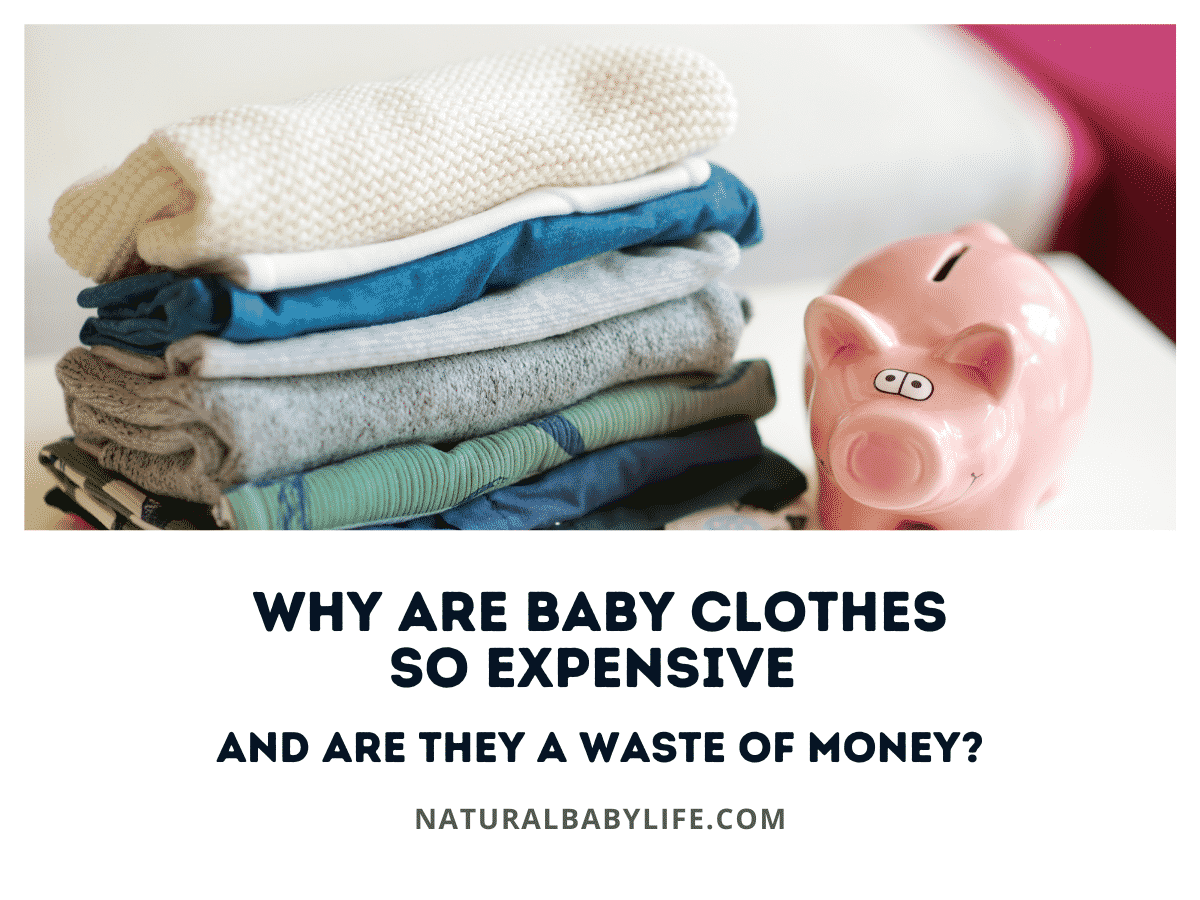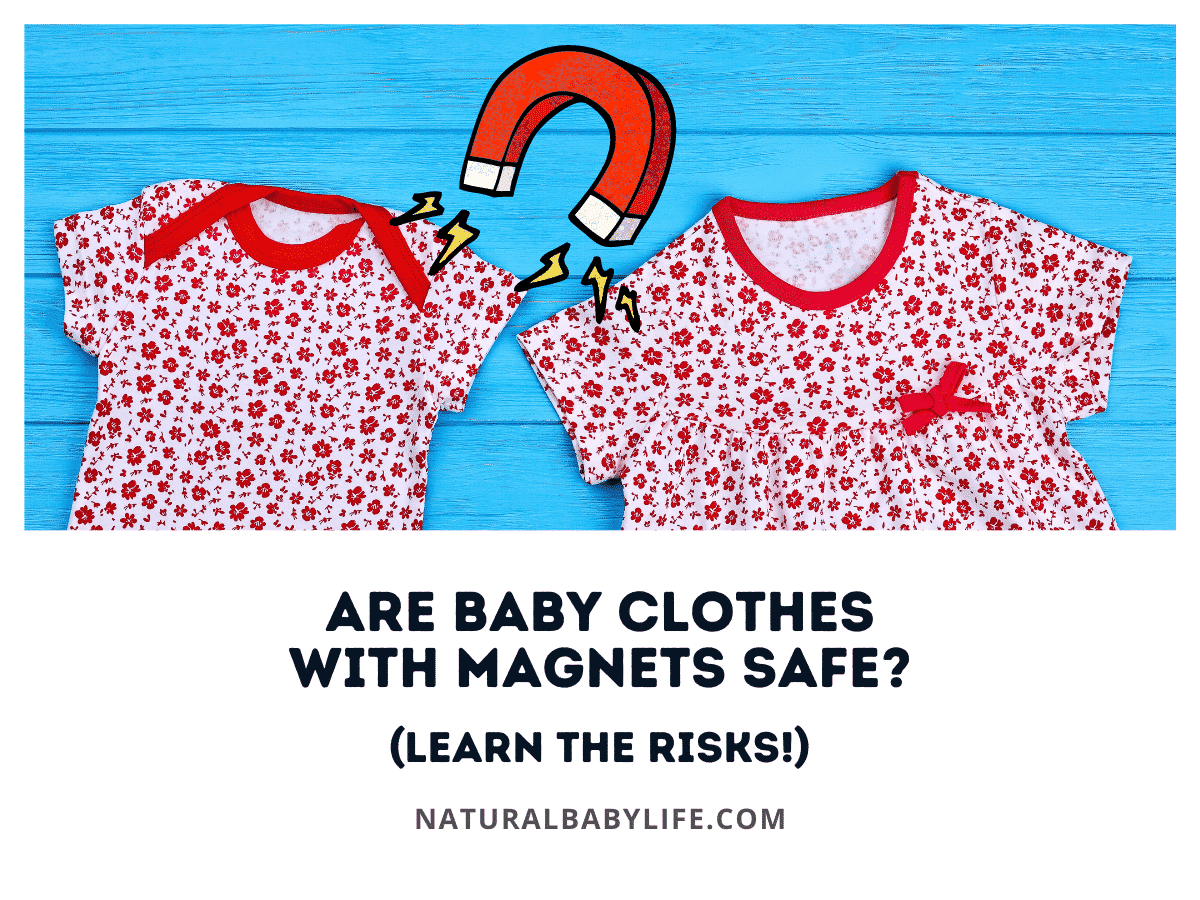A growing baby’s wardrobe won’t last long, but little ones can still be hard on their clothing. Parents often find themselves wondering what they can do with the clothes their baby has outgrown, especially when their clothes aren’t in perfect condition. Can stained baby clothes be donated?
Many large resale organizations, including Goodwill and the Salvation Army, accept stained baby clothes. Even if they are unable to sell the clothing, they have access to methods of textile recycling that typical consumers – and local resale shops – don’t. You may also choose to offer the materials on a service like Freecyle for others to use.
Keep reading to learn more about where you can donate stained baby clothing, and how you can repurpose them for your own use.
Table of Contents
Is it okay to donate stained baby clothes?
You may have thought that your stained baby clothes were destined for the trash, but there are many other options that will give them new life and keep them out of landfills. Before making a decision, consider what organizations near you accept donations and the severity of the stain.
Most large resale companies will not resell stained clothing, but they will accept them as donations. Organizations like Goodwill and the Salvation Army sell stained clothing to textile recyclers, who turn old clothing into industrial rags, insulation, upholstery stuffing, and other materials.
Though many larger resale companies accept stained clothing, your local, non-chain thrift store might not. Smaller resale shops typically do not have the same connections to textile recyclers as the larger resale companies. For these shops, it is best to call or check their website for their donation policy.
Resale and thrift stores are not the only places that accept used clothing. You may want to donate baby clothes to homeless shelters, churches, and outreach centers. You can also pass clothing on to friends, family, or other individuals in need. In these situations, it’s best to be upfront about the stains and let the items be looked over individually.
It is important to assess the damage before donating stained baby clothes to any organization or person. Never donate or gift an item of baby clothing that harbors mold or mildew or is potentially contaminated. There is a big difference between a grass or juice stain and a stain from a diaper blow-out. Stains from baby poop make clothing much less likely to be reworn. Even if they are sanitized, the stain may make the clothing look contaminated. Instead, wash these items well and look for ways they can be repurposed.
Would you be okay receiving stained baby clothes?
Personally, my eagerness to inherit stained baby clothes would vary based on the type, location, and severity of the stain.
If someone were to give me stained baby clothes, I would not be offended; however, I would prefer to be asked about each item individually.
Donating stained baby clothes
Many large-scale thrift stores do accept stained baby clothes. Items that are too damaged to be reworn are sent to for-profit textile recycling companies.
Secondary Materials and Recycled Textiles Association (SMART) is an organization that promotes this type of recycling. Not all thrift stores and charity shops partner with textile recycling companies, but they are becoming more common.
Stained baby clothes may still be wearable even if they aren’t resold at thrift stores. Depending on the severity of the stain, consider offering the clothing to your friends and family or others in need.
Goodwill
Goodwill Industries states that it will take clothing of any condition as long as it’s safe.
Clothing that cannot be sold as-is will be recycled into products like rags and insulation.
Although they will accept damaged clothing, they recommend trying to repurpose these items for your own use.
Salvation Army
The Salvation Army does accept stained clothing.
Similar to Goodwill, they work with organizations that recycle textiles. They highlight that they do profit from these types of donations, which directly benefits the community.
Local shelters
Your local shelter can be a great place to make clothing donations; however, they typically do not accept stained clothing.
Unlike Goodwill and The Salvation Army, they don’t usually have connections to textile recyclers and it is not worth the effort to clean or sort through stained clothing items.
Family and friends
Passing down baby clothes to friends and family is a wonderful gesture, but it’s something you might want to reconsider if your baby clothes are stained.
Most people are wary of using stained second-hand items. You don’t want to burden your friends and family by giving them unwanted baby clothing. Beyond that, some people may feel insulted by receiving damaged baby clothing, so be thoughtful about the items you are passing down.
Not every stain renders a piece of baby clothing unwearable. For instance, if you have a stubborn stain on a clothing item that is barely noticeable or hidden, it might be something that can be reworn. Be upfront and ask the intended recipient if it can be of use.
Removing stains from baby clothes before donation
It is important to always wash clothes before donating them.
For stained clothing, trying to remove the stains is worth your effort. Though some resellers accept stained clothing for recycling, the donation is much more beneficial if the item can be reworn.
For stained baby clothing, you are likely dealing with a protein-based stain. Stains from spit-ups, blow-outs, and most foods are protein-based. You can treat a protein-based stain with the following steps:
- Step 1: Soak in cool water.
- Step 2: Add an enzyme cleaner, such as Biz, to break down the protein.
- Step 3: Use a general stain remover, such as Shout.
- Step 4: Wash as usual.
Clothing for older babies and toddlers may be susceptible to juice stains. Following these steps to remove juice stains:
- Step 1: Soak in a 50:50 rubbing alcohol to water solution.
- Step 2: Use a general stain remover, such as Shout.
- Step 3: Wash as usual.
Grease stains may also be common, such as those caused by baby oil or petrolatum jelly. Treat these stains using the following steps:
- Step 1: Blot away excess oil.
- Step 2: Apply cornstarch or talcum powder to the stain for 10-15 minutes.
- Step 3: Use a general stain remover, such as Shout.
- Step 4: Wash as usual.
What do with old clothes that can’t be donated
There are many other ways to give your stained baby clothing new life and keep them out of landfills if you are unable to donate your stained baby clothes or would prefer an alternative.
Freecyle
Freecycle is a nonprofit organization that focuses on reducing waste by giving people a platform to offer their unwanted items to their community for free.
Freecycle is available in a growing number of cities. It is free and easy to become a member.
Tie Dye
Tie Dye is an innovative and fun way to renew baby clothes with set-in stains.
Tie dye is a trend that is always coming back in style, and it is easy to do. All you need is clothing dye, rubber bands, and a strategy, and you can create a pattern that will obscure the stain on your clothing item.
Check out Why Buy? DIY! by dushonok to learn more about tie dying stained clothing.
Rags
Many large resale organizations sell damaged clothes to companies that recycle them into rags and cleaning cloths. This is a great idea that you can do in your home.
As well as repurposing clothing, this may help you cut down on paper towel usage or save you money on new cleaning cloths. These recycled cleaning rags work great for dusting, cleaning windows, wiping up spills, washing your car, and multitude of other chores.
Even if these rags eventually wind up in the trash, you’ve massively extended the life of the original clothing item.
Crafting
Upcycling your baby’s stained clothes into something new is a great way to hold on to these sentimental items of clothing.
Here are some crafts we recommend trying with old baby clothes:
- Memory quilt – Cut out squares from various clothing items, then sew them into a quilt.
- Activity book – Zippers, buttons, snaps, and other fastenings can be cut out and sewn into a cloth book. See the blog forty-two roads for an example.
- Stuffing – Shred stained clothing and use it as stuffing for a stuffed animal or pillow.
- Rag Rug – Crochet, weave, or braid shredded clothing to make a rug. Visit the blog My Poppet to learn more about these methods.
Compost
According to Trusted Clothes, clothing made out of natural fibers, such as cotton, linen, and wool, is compostable.
Though it may take a while, clothing made of natural materials will break down eventually; tearing the clothing up will speed up the process.
In the case of natural/synthetic fabric blends, the natural fabric will decompose, leaving the synthetic material behind to be discarded.

![Can I Donate Stained Baby Clothes? [Plus Other Uses for Old Clothes]](https://naturalbabylife.com/wp-content/uploads/2021/01/can-i-donate-stained-baby-clothes_featured.png)


